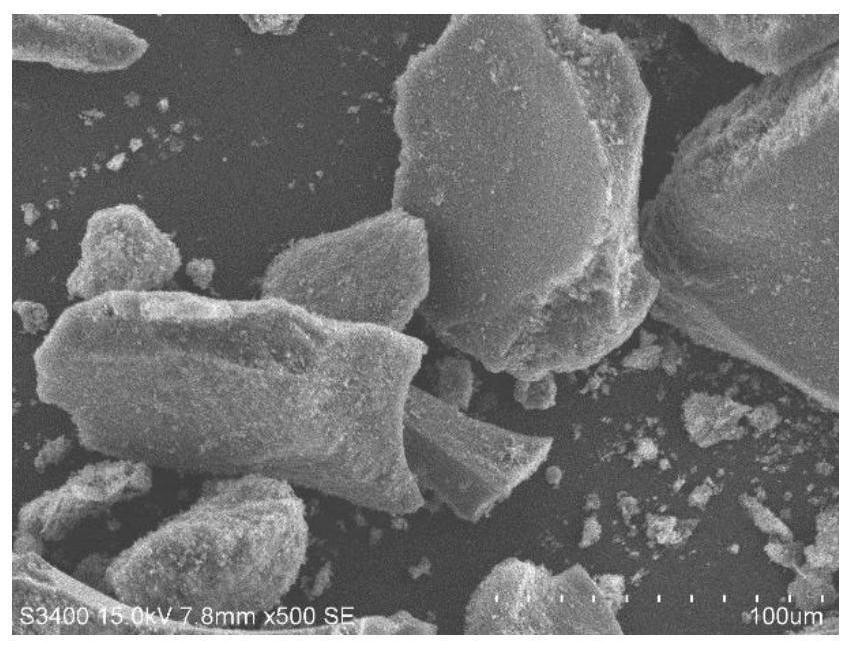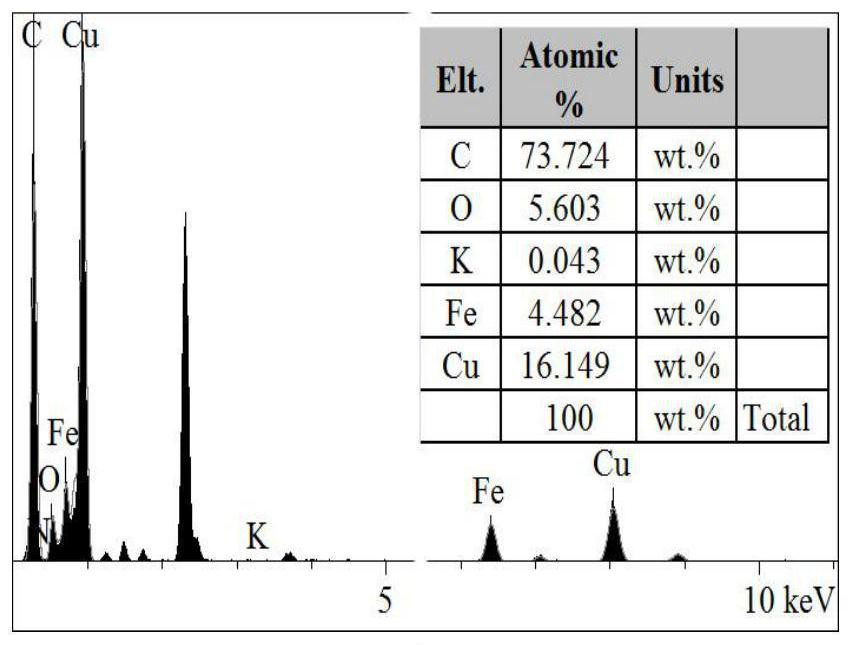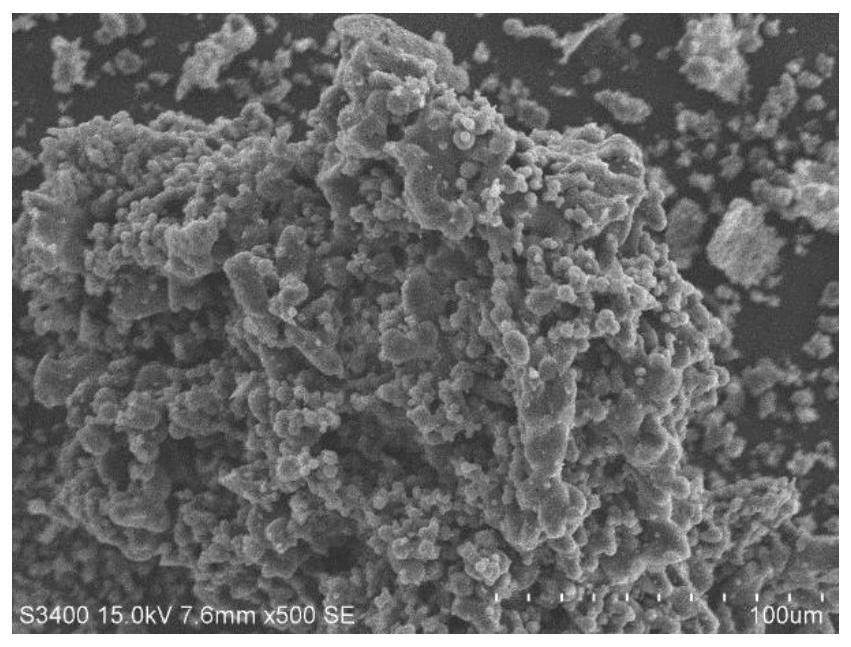Method for preparing starch carbon-based Fenton-like catalyst based on EDTA chelation technology
A catalyst and starch technology, applied in chemical instruments and methods, catalyst activation/preparation, physical/chemical process catalysts, etc., can solve the problems of low catalytic efficiency, inability to fix uniformly and effectively, and large copper ion dissolution
- Summary
- Abstract
- Description
- Claims
- Application Information
AI Technical Summary
Problems solved by technology
Method used
Image
Examples
Embodiment 1
[0055] (1) Add 100 parts of deionized water, 100 parts of cornstarch and 2 parts of NaCl into a three-necked round-bottomed flask, mechanically stir at a speed of 200r / min, adjust the pH value to 10.0, add 5 parts of ethylenediaminetetraacetic acid di Sodium EDTA-2Na, then drop 3 parts of epichlorohydrin, and heat it in a water bath to 55°C for 300 minutes to obtain a cross-linked polymer; among them, deionized water, corn starch, ethylenediaminetetraacetic acid disodium EDTA-2Na and The mass ratio of epichlorohydrin is 100:100:5:3;
[0056] (2) Add 1 part of FeCl dissolved in 20 parts of deionized water to the cross-linked polymer obtained in step (1) 3 ·6H 2 O and 3 parts CuCl 2 2H 2 O, maintain a stirring speed of 200r / min, react at 85°C for 360min, and then cool to room temperature to obtain a catalyst precursor;
[0057] (3) Place the catalyst precursor obtained in step (2) in a polytetrafluoroethylene hydrothermal reaction kettle, and treat it with hot water at 220°C...
Embodiment 2
[0061] (1) Add 100 parts of deionized water, 100 parts of corn starch, and 2 parts of NaCl into a three-necked round-bottomed flask, mechanically stir at a speed of 200r / min, adjust the pH value to 10.0, and then add 5 parts of ethylenediaminetetraacetic acid Disodium EDTA-2Na, then drop 3 parts of epichlorohydrin, heat in a water bath to 55°C and react for 300 minutes to obtain a cross-linked polymer; among them, deionized water, corn starch, ethylenediaminetetraacetic acid disodium EDTA-2Na The mass ratio with epichlorohydrin is 100:100:5:3;
[0062] (2) Add 0.5 parts of FeCl dissolved in 20 parts of deionized water to the cross-linked polymer obtained in step (1) 3 ·6H 2 O and 3 parts CuCl 2 2H 2 O, maintain a stirring speed of 200r / min, react at 85°C for 360min, and then cool to room temperature to obtain a catalyst precursor;
[0063] (3) Place the catalyst precursor obtained in step (2) in a polytetrafluoroethylene hydrothermal reaction kettle, and treat it with hot ...
Embodiment 3
[0065] (1) Add 100 parts of deionized water, 100 parts of potato starch, and 2 parts of NaCl into a three-necked round-bottomed flask, mechanically stir at a speed of 200r / min, adjust the pH value to 10.0, and then add 5 parts of ethylenediaminetetraacetic acid Disodium EDTA-2Na, then drop 3 parts of sodium hexametaphosphate, and heat in a water bath to 55°C for 300 minutes to obtain a cross-linked polymer; among them, deionized water, potato starch, ethylenediaminetetraacetic acid disodium EDTA-2Na The mass ratio with cyclic sodium hexametaphosphate is 100:100:5:3;
[0066] (2) Add 1 part of FeCl dissolved in 20 parts of deionized water to the cross-linked polymer obtained in step (1) 3 ·6H 2 O and 2 parts CuCl 2 2H 2 O, maintain a stirring speed of 200r / min, react at 85°C for 360min, and then cool to room temperature to obtain a catalyst precursor;
[0067] (3) Place the catalyst precursor obtained in step (2) in a polytetrafluoroethylene hydrothermal reaction kettle, an...
PUM
 Login to View More
Login to View More Abstract
Description
Claims
Application Information
 Login to View More
Login to View More - Generate Ideas
- Intellectual Property
- Life Sciences
- Materials
- Tech Scout
- Unparalleled Data Quality
- Higher Quality Content
- 60% Fewer Hallucinations
Browse by: Latest US Patents, China's latest patents, Technical Efficacy Thesaurus, Application Domain, Technology Topic, Popular Technical Reports.
© 2025 PatSnap. All rights reserved.Legal|Privacy policy|Modern Slavery Act Transparency Statement|Sitemap|About US| Contact US: help@patsnap.com



